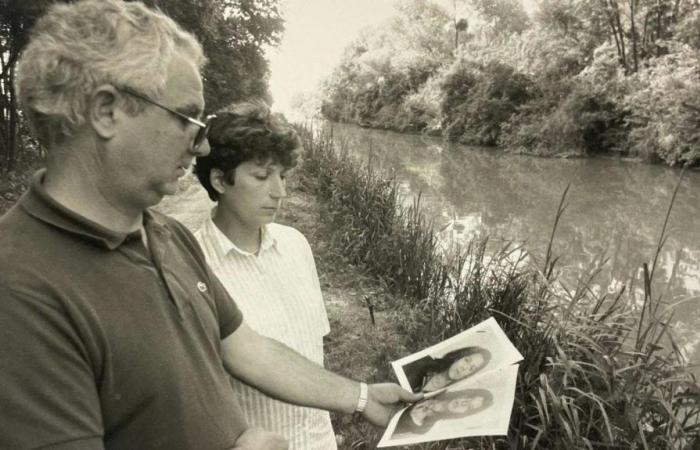Florence, 14 June 2024 – Backpack on your shoulders, in your eyes the desire to change your life. Next to the best friend, the hunger is that of twenty years, the destination is France. Thus began the journey of Costanza Sproviero (20 years) e Monica Amalfitano (18), way back on 8 June 1994. And it ended in the worst possible way only 72 hours later, when a fisherman first noticed their corpses dragged by the current in the Beaule canal (on the Seine), in Nogent sur Seine, a small village in a hundred kilometers from Paris. Only one of the two girls, Monica, had documents in her pocket. Nothing, no trace of the other. Just small pieces of an illegible letter. Seventy-two hours of mystery.
A tragic and mysterious end, capable of damaging the institutional relations between Italy and France for a few months, capable of breaking the hearts of two Florentine families. Capable of remaining without justice for thirty years. The story of Costanza and Monica is a story of stages: drowning deaths, then an accident, an inexplicable tragedy. These are the first responses from the gendarmerie officials, who immediately distance themselves from the “Italian method”, specifying that news on the case will only be given at the end of the investigations. An angry joke that does not go unnoticed by the Florentine investigators, while the Italian newspapers go wild with the most disparate hypotheses. Monica did small jobs at the Cascine racecourse in Florence, and for a moment there is talk of a track that leads from the Florence racecourse to Nogent. Suicide, double murder, fatality, everyone wants to know what two girls like them were doing in a town in the middle of nowhere in north-eastern France, 160 kilometers from Paris and a few steps from a nuclear power plant.
The file ends up on the desk of the prosecutor Luca Turco, who immediately requests a letter rogatory to access the French investigation documents. After a push and pull between Florence and Paris, the green light arrives. In the meantime, among the said and unsaid of the French police, the truth about the case begins to emerge. The parents of the two girls fly to Troyes: there is the autopsy, the recognition of the bodies, then the return of the bodies to Italy. The French gendarmerie is also supported, on behalf of Interpol, by the head of the Florentine flying squad, the deputy commissioner Maurizio Cimmino. The investigations are 360 degrees and everything points to a double murder.
Or at least to the Italian investigators. Because from France we first talk about a double drowning for a double illness occurred at the same time. A version that borders on the incredible, and which is quickly denied. Medical-legal examinations on the body establish that there is very little water in the lungs of the young Florentines. No water, no drowning. Were Monica and Costanza already dead when they fell into the canal? Impossible. The hunt for the person responsible then begins from the Troyes prosecutor’s office. Marks are found on the corpses. Contusions, small wounds which at first are attributed to the stay in the water, perhaps to some impact, then lead to talk of violence and, perhaps, of a beating. The hypothesis is that one of the two girls may have died accidentally and that the other was killed to prevent her from speaking. Between an Italian investigation and an international letter rogatory, the trail of a drug-based party gone wrong also emerges. Who did they meet? This is one of the hypotheses of the Florentine police: Monica and Costanza had been together with a French friend, linked to the world of drugs, at the horse fair in Provins, a town about twenty kilometers from Nogent-sur-Seine. The friend stays with them until late in the evening. Then, probably, the Florentine girls go to Nogent-sur-Seine together with other French acquaintances. At a certain point, while the group was on the bank of the canal, Costanza Sproviero began to feel ill. The symptoms are those of an overdose. Monica Amalfitano, seeing her dearest friend in the throes of death, becomes afraid. She thus tries to escape to call for help and try to save Monica. But the French – fearing that the girl would tell the police how Costanza had died – chase her, catch up with her and beat her to death. Then they throw her body into the icy waters of the canal. After the murder they go back to the place where Costanza’s body lies. She too ends up in the canal, a stone’s throw from the Nogent nuclear power station.
The Italian investigators they seem to be one step away from the truth. But their hands are tied: the investigation is French. Meanwhile, time passes. Nobody speaks, nobody gives the slightest clue. In Italy, the groom of the racecourse where Monica worked, the only suspect in the case of the two deaths, is interviewed. Within a few years everything ends up in a bubble. Today, thirty years after that tragedy, all that remains are faded photos of Monica and Costanza’s sweet faces. And a sense of injustice that has no boundaries.





